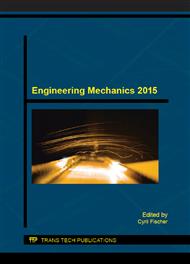[1]
R.C. Thompson, C.J. Moore, F.S. vom Saal, S.H. Swan, Plastics, the environment and human health: current consensus and future trends, " Phil. Trans. Roy. Soc. B: Biological Science, (2009) 2153-2166.
DOI: 10.1098/rstb.2009.0053
Google Scholar
[2]
S.M. Al-Salem, P. Lettieri and J. Baeyens, Recycling and recovery routes of plastic solid waste (PSW): A review, Waste Manage. 29. 10 (2009) 2625-2643.
DOI: 10.1016/j.wasman.2009.06.004
Google Scholar
[3]
P.M. Subramanian, Plastic recycling and waste management in the US, Resour. Conserv. Recy. 28. 3 (2000) 253-263.
Google Scholar
[4]
H. Shent, R.J. Pugh and E. Forssberg, A review of plastic waste recycling and the flotation of plastics, Resour. Conserv. Recy. 25. 2 (1999) 85-109.
DOI: 10.1016/s0921-3449(98)00017-2
Google Scholar
[5]
M. Mastellone, Thermal treatments of plastic waste by means of fluidized bed reactors, PhD Thesis, Italy: Department of Chemical Engineering, Second University of Naples, (1999).
Google Scholar
[6]
R.G. Lampo and T.J. Nosker, Construction Productivity Advancement Research (CPAR) Program: Development and Testing of Plastic Lumber Materials for Construction Applications (No. CERL-TR-97/95), Construction Engineering Research Lab (Army) Champaign, IL (1997).
DOI: 10.21236/ada328449
Google Scholar
[7]
V. Chandra, J. Kim, T.J. Nosker and G. F. Nagel, World's first thermoplastic bridges, Proceedings of FHWA Bridge Engineering Conference, Orlando, FL, April (2010).
Google Scholar
[8]
R.M. Bajracharya, A.C. Manalo, W. Karunasena and K.T. Lau, An overview of mechanical properties and durability of glass-fibre reinforced recycled mixed plastic waste composites, Mater. Des. 62 (2014), 98-112.
DOI: 10.1016/j.matdes.2014.04.081
Google Scholar
[9]
S. K. Najafi, Use of recycled plastics in wood plastic composites - A review, Waste Manage. 33. 9 (2013) 1898-(1905).
DOI: 10.1016/j.wasman.2013.05.017
Google Scholar
[10]
J. Hopewell, R. Dvorak and E. Kosior, Plastics recycling: challenges and opportunities, Philos. T. Roy. B, 364(1526), (2009), 2115-2126.
DOI: 10.1098/rstb.2008.0311
Google Scholar
[11]
S. Semerdjiev, Introduction to structural foam, Society of Plastic Engineers, Inc., Connecticut, USA, (1982).
Google Scholar
[12]
M. Sejnoha, J. Zeman, Micromechanics in Practice, WIT Press, (2013).
Google Scholar
[13]
W.C. Oliver and G.M. Pharr, An improved technique for determining hardness and elastic modulus using load and displacement sending indentation experiment, J. Mater. Res. 7. 6 (1992), 1564-1583.
DOI: 10.1557/jmr.1992.1564
Google Scholar
[14]
Y. Benveniste, A new approach to the application of Mori-Tanaka theory in composite materials, Mech. Mater., 6 (1987), 147–157.
Google Scholar


